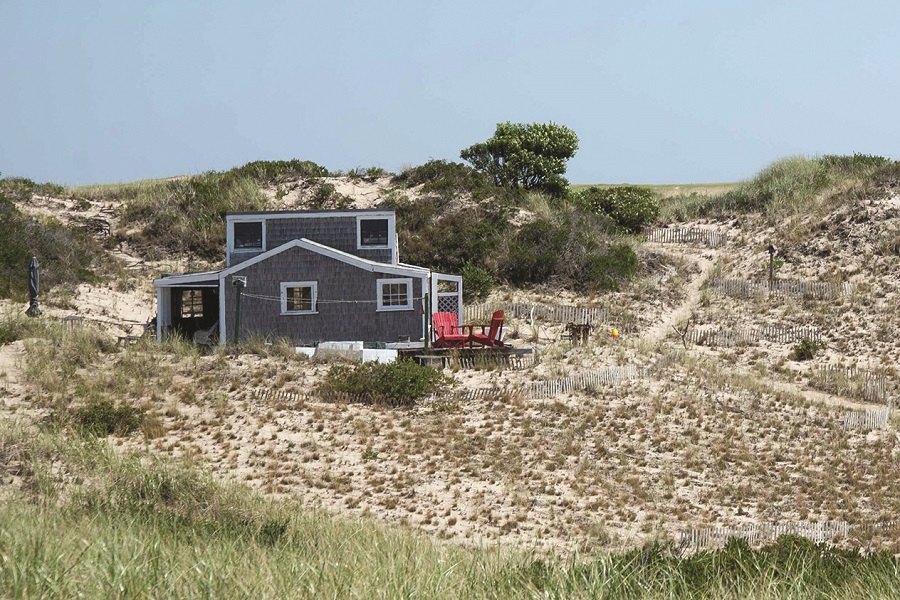PROVINCETOWN — The National Park Service’s effort to write new 10-year leases for 8 of the 18 dune shacks in the Peaked Hill Bars Historic District on the back shore of Provincetown and Truro is approaching a major deadline on Friday, Sept. 29.
After originally telling families that have leased the shacks for decades to be prepared to vacate them on Sept. 1, the agency extended their permits to Sept. 29. By then, the agency should have selected the winners of the new leases.
Park Service officials have refused to comment publicly on the current leasing competition beyond saying that it “largely follows” the Dune Shack Preservation and Use Plan that was negotiated in 2012. Provincetown and Truro town officials dispute that.

Cape Cod National Seashore Supt. Brian Carlstrom refused to answer most of the questions the Provincetown select board asked on Aug. 28, saying only that “the RFP process is underway, and I really can’t speak to it because it is underway. A lot of work has gone into it. We want to maintain the integrity of that work, and I can’t speak to any specifics on it right now.”
Carlstrom did speak in more detail in a phone call with longtime dune shack leaseholders Peter Clemons and Marianne Benson in June.
Clemons told Carlstrom at the outset of the call that he was recording it. On the call, Carlstrom said, “We do appreciate what the dune shacks are about, what the Peaked Hills Historic District is about, and are trying very hard through this leasing opportunity to perpetuate that.
“I have the intent to honor the integrity of the shacks going forward, so that your kids and grandkids and great-grandkids can continue to have the opportunity to enjoy them just as you have,” Carlstrom said.
“It sounds good the way you just said it, but it’s not reflected in this paperwork at all,” Clemons replied. “There’s not a trace of what you just said in the RFP.”
“If you want it to continue on as it always has, you need to construct your proposal to reflect that,” Carlstrom said.
“We’re all broken-hearted,” said Benson during the call. “We felt we were really good stewards, and to end it this way is just heartbreaking.”
“I wouldn’t necessarily characterize it as ending,” Carlstrom said. “Again, I would encourage you to put together a robust proposal that meets the necessary requirements within the RFP and have some confidence in the process.”
Benson described the public process that helped develop the Use Plan and asked Carlstrom why it had been discarded.
“The RFP is based off the Preservation and Use Plan, which is held up as an example for that kind of document throughout the Park Service and the preservation community,” Carlstrom said. “We have to crosswalk between that and the RFP. And you’ve got to be willing to look at the process we’re forced to contend with from a bureaucratic point of view.”
What’s in the RFP?
Carlstrom’s argument to Clemons and Benson was that the goals of the Use Plan may not seem apparent in the RFP’s text — but that an extremely close reader will find them there.
“I can understand there’s a lot of fear and concern around this,” Carlstrom said. “I have a great deal of confidence that in six months we can have a very different conversation.”
There is no mention of the Preservation and Use Plan in the RFP itself. There is a single reference to it in the official “Question and Answer” page on the Park Service’s website.
The 28th question on that page is “Do the evaluators have the cultural, historical, environmental and shack specific knowledge to properly evaluate each RFP?”
“Yes,” the Park Service wrote in reply. “All documentation has been shared with the selection panel, including but not limited to the historical preservation plan (E.A.) and the Wolfe Report.”
(The Wolfe Report was produced by cultural anthropologist Robert Wolfe for the Park Service in 2005 and documents the families that have been connected to particular dune shacks for decades.)
Selection criteria number 2 in the RFP asks for a detailed maintenance plan. Selection criteria number 4 asks respondents how “your experience and background qualify you” to “maintain these unique properties.” Selection criteria number 1 asks for “any other details you believe are relevant.”
The RFP also states that across all these criteria, “Proposals with detailed responses providing information that is both relevant to each criterion and specific to the shack you would like to lease will be rated more highly than proposals with generic or vague responses.” That sentence is printed in bold italics.
“You need to read the RFP very carefully and construct your proposal accordingly,” Carlstrom said.
Many details of the Use Plan do not appear in the RFP. “Commitment to participate in public access opportunities for the historic district” is a selection criterion in the Use Plan. It is not present in the RFP.
“Hybrid use,” in which a leaseholder occupies a dune shack in the summer but allows artists-in-residence in the winter, was specifically encouraged in the Use Plan and specifically disallowed in the RFP.
Nonetheless, Carlstrom told Clemons and Benson that the RFP contains the negotiated provisions of the Use Plan within it.
“This has been in development for over a decade,” he said. “It has taken a long time to get to this point. I sincerely hope you’re developing a proposal and will be submitting one.”



